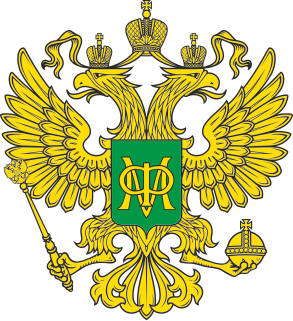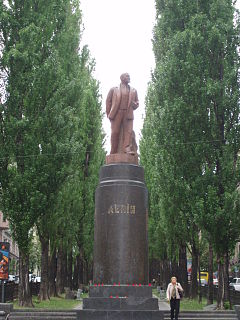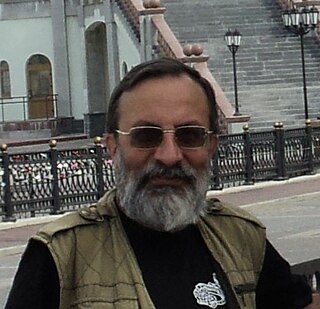






Kvass barrels are specialized mobile vessels of large capacity designed for transportation of kvass and its retail sale. With the help of kvass barrels, proper preservation of kvass and its prompt delivery to consumers is ensured.







Kvass barrels are specialized mobile vessels of large capacity designed for transportation of kvass and its retail sale. With the help of kvass barrels, proper preservation of kvass and its prompt delivery to consumers is ensured.
The main model of the kvass barrel is the ACPT-0.9 tanker trailer for transportation of kvass, the design of which was developed in the USSR, where it was produced since 1967 by the Novo-Troitsky Machine Building Plant, Karlovy Vary Mechanical Plant and Sokuluk Plant of Commercial Machine Building. [1] Interestingly, the ACPT-0.9 tanker trailer for milk transportation has been manufactured since 1957. [2] In the version of the early 1970s, in the front of the barrel (on the seller's side) in its upper part there was a water tank with a capacity of 30 liters. [3] In addition, some characteristics of ACPT-0.9 tanks depended on the manufacturer, but generally changed slightly. [4] The characteristics of tanks of this model, manufactured in modern Russian plants, also differ slightly from the Soviet ones (see below).
Kvass barrels are sealed containers made of food grade stainless steel or food grade aluminum (in the 1975 model year) and having at the bottom eyelets designed to attach it to a vehicle for transportation. The cart for transporting the fermented barrel has two wheels, a frame made of steel channels, and a coupling device with a towbar for coupling the cart with the vehicle. The barrel vessel itself is sealed and has a filler neck or drain tap for bottling and selling. Also in the lower part of the barrel there is a drain plug or ball valve designed to drain the remains of sourdough at the end of the work shift. To maintain the temperature conditions, kvass barrels are often covered with a special heat-insulating foam. For the convenience of selling kvass, in the filling part of the kvass barrel there is a device for bottling and quick washing of glasses and mugs and a device for supplying tap water to the washing device.
Made of aluminum with thermal insulation, lined with steel
During transportation, a serial connection of ACPT-0.9 is possible.
Transport in Turkmenistan includes roadways, railways, airways, seaways, and waterways, as well as oil-, gas-, and water pipelines. Road-, rail-, and waterway transport fall under the jurisdiction of the Ministry of Industry and Communications.

Russian Railways is a Russian fully state-owned vertically integrated railway company, both managing infrastructure and operating freight and passenger train services.

Rail transport in Russia runs on one of the biggest railway networks in the world. Russian railways are the third longest by length and third by volume of freight hauled, after the railways of the United States and China. In overall density of operations /length of track, Russia is second only to China. Rail transport in Russia has been described as one of the economic wonders of the 19th, 20th, and 21st centuries.

The Ministry of Finance of the Union of Soviet Socialist Republics (USSR), formed on 15 March 1946, was one of the most important government offices in the Soviet Union. Until 1946 it was known as the People's Commissariat for Finance. Narkomfin, at the all-Union level, was established on 6 July 1923 after the signing of the Treaty on the Creation of the USSR, and was based upon the People's Commissariat for Finance of the Russian Soviet Federative Socialist Republic (RSFSR) formed in 1917. The Ministry was led by the Minister of Finance, prior to 1946 a Commissar, who was nominated by the Chairman of the Council of Ministers and then confirmed by the Presidium of the Supreme Soviet. The minister was a member of the Council of Ministers.

The Soviet Union was heavily dependent on rail transport, not least during the Russian Civil War and World War II, but also for industrialization according to the five-year plans.
Soviet Union stamp catalogue is a national catalogue of the RSFSR and USSR postage stamps and miniature sheets, which was being published in the USSR by the “Soyuzpechat” Central Philatelic Agency (CPA) and some other publishers related to the Ministry of Communications. The catalogue usually republished in corpore around once in a 10–15 years. In between republications, additional issues came out every year. These issues contains descriptions of stamps and miniature sheets issued in USSR last year.

Ministry of Finance of the Russian Federation is a federal ministry, responsible for general financial policy and for general management in the field of finance of the Russian Federation. The ministry has two predecessors, the most notable one being the Ministry of Finance who is itself the successor of the Ministry of Finance of the Russian Empire. The agency has its headquarters in Ilinka Street 9. in Moscow.

Nikolai Efimovich Timkov was a Soviet Russian painter, Honored Artist of Russian Federation, and a member of the Saint Petersburg Union of Artists. He lived and worked in Leningrad and is regarded as one of the leading representatives of the Leningrad School of Painting, worldwide known for his landscape paintings.

Nikolai Nikolaevich Baskakov was a Soviet painter, a member of the Saint Petersburg Union of Artists, who lived and worked in Leningrad, regarded as one of the leading representatives of the Leningrad school of painting, most famous for his genre and portrait painting.

The Ministry of Communications of the Union of Soviet Socialist Republics (USSR) was the central state administration body on communications in the Soviet Union from 1923 to 1991. During its existence it had three names: People's Commissariat for Posts and Telegraphs (1923–32), People's Commissariat for Communications (1932–46) and Ministry of Communications (1946–1991). It had authority over the postal, telegraph and telephone communications as well as public radio, technical means of radio and television broadcasting, and the distribution of periodicals in the country.

People's Commissariat for Posts and Telegraphs of the RSFSR, known shortly as the Narkompochtel, was the central organ of government of the RSFSR that was in charge of the organisation and development of the different forms of communication, including postal service. It was founded in Petrograd on 7 November [O.S. 25 October] 1917 from the Russian Ministry of Posts and Telegraphs and retained its organisational structure.

Russia was and is the largest country in the world. Its geography of N.-S. rivers and E.-W. commerce, plus, importantly, the mostly flat terrain, made it very suited to develop railroads as the basic mode of transportation.

The year 1946 was marked by many events that left an imprint on the history of Soviet and Russian fine arts.
Formerly known as the Scientific Research Institute of Nutrition of the Russian Academy of Medical Sciences, the Institute of Nutrition is a Federal Russian state-owned budgetary entity. It is currently located in Moscow, Russia.

The Bekhterev Review of Psychiatry and Medical Psychology is a Russian peer-reviewed medical journal containing original research, systematic reviews, etc. relating to the areas of psychiatry, medical psychology and psychotherapy.

The Road Traffic Control Department, abbreviated as ORUD, was the road traffic control, highway patrol and traffic law enforcement department of the Soviet Militsiya. It was in operation from 1931 to 1961, when it was merged with the State Automobile Inspectorate.

Vladimir Petrukhin is a Russian historian, archaeologist and ethnographer, Doctor of Historical Sciences, chief research fellow of the Medieval Section in the Institute of Slavic Studies in the Russian Academy of Sciences, professor of Higher School of Economics.

Arseny Dmitrievich Mironov was a Russian scientist, aerospace engineer, and aviator. He was one of the oldest researchers in aircraft aerodynamics and flight testing, a Gromov Flight Research Institute (GFRI) director from 1981 to 1985, a recipient of the Stalin Prize in 1948 and the USSR State Prize in 1976, and an honorary citizen of Zhukovsky.
Igor Nikolaevich Danilevsky is a Russian historian and a specialist on the history of Kievan Rus and Muscovy until the end of the 16th century. Professor, Doctor of Historical Sciences.

Arkady Adamovich Brish was a Soviet and Russian physicist, a designer of nuclear weapons, Doctor of Sciences, professor, Hero of Socialist Labour, Laureate of the Lenin Prize and the USSR State Prize.